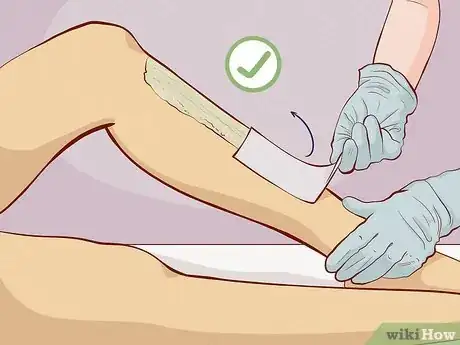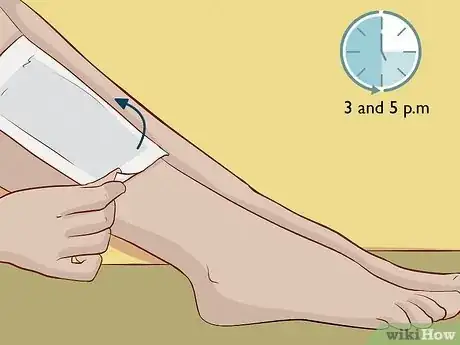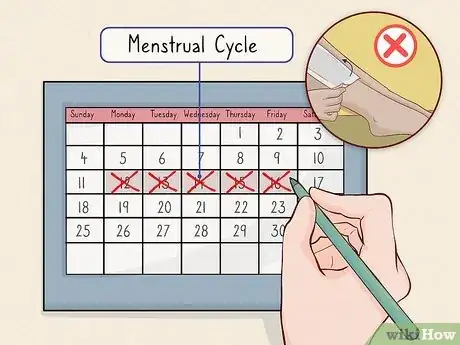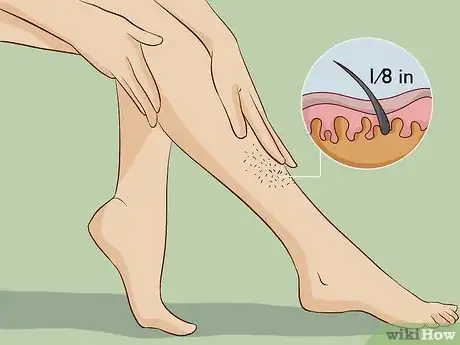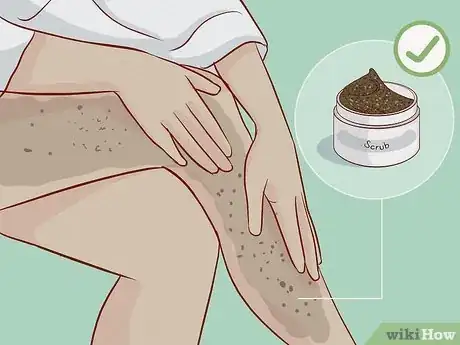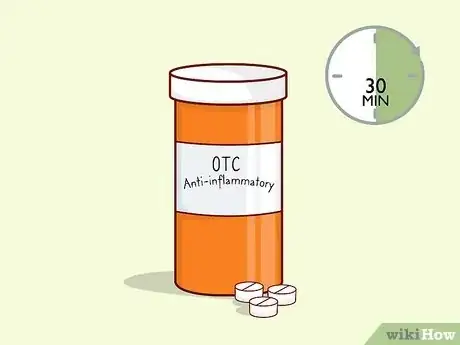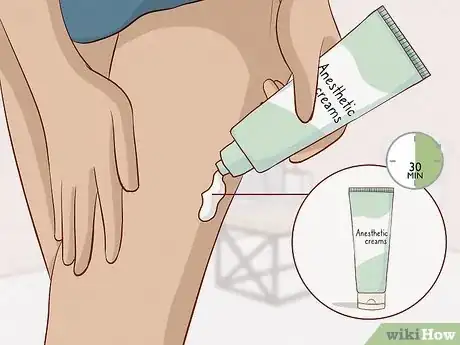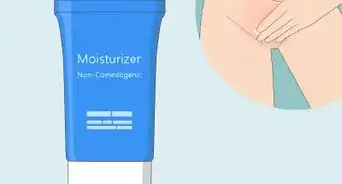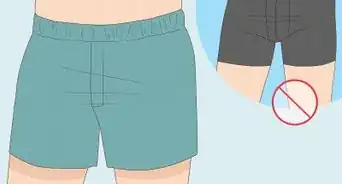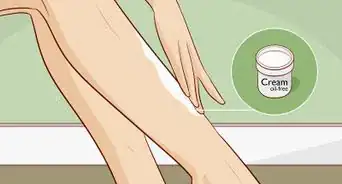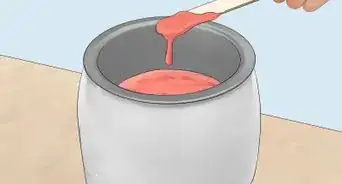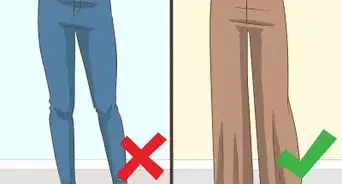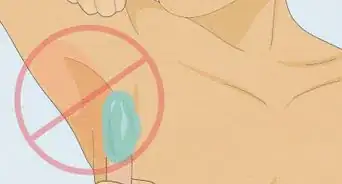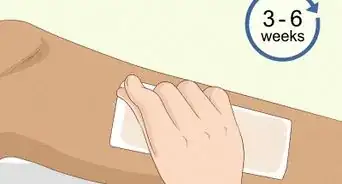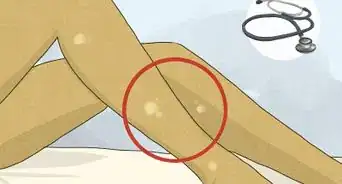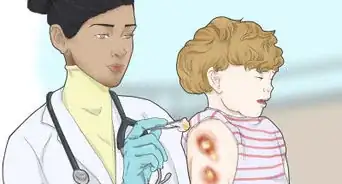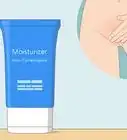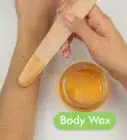This article was co-authored by Indy Chabra, MD, PhD and by wikiHow staff writer, Jennifer Mueller, JD. Dr. Indy Chabra is a Board Certified Dermatologist and a Board Certified Mohs Micrographic Surgeon. He is the Founding Member of DMC Dermatology & Mohs based in Tucson, Arizona. With over 15 years of experience, he provides medical, surgical, and cosmetic dermatology care for adult and pediatric patients. Dr. Chabra earned a BS in Chemistry and Biological Sciences and an AB in Economics from Stanford University. He also received his MD and PhD in Microbiology and Genetics from Stony Brook University. He completed his Dermatology residency at the University of Pittsburgh Medical Center (UPMC), Pittsburgh. While at UPMC, Dr. Chabra received extensive training in complex Medical Dermatology, hair and nail conditions, Pediatric Dermatology, Cosmetic Dermatology, and Mohs Skin Cancer Surgery. Dr. Chabra is a Fellow of the American Society for Mohs Surgery, a Fellow of the American Academy of Dermatology, and a Fellow of the American Society for Dermatologic Surgery. Dr. Chabra also provides in-patient Dermatology consults at Tucson Medical Center.
There are 9 references cited in this article, which can be found at the bottom of the page.
This article has been viewed 19,059 times.
You love the look and feel of your smooth skin after waxing, right? It's just the pain that you could do without. Still, if you wax regularly, you've probably decided that it beats shaving every day. While we can't completely eliminate the sensation that comes from having hair ripped out of your skin with hot wax, we can give you some tips that will make the experience as painless as possible.
Steps
Go to a pro instead of waxing yourself.
-
1Professional estheticians are trained to wax with minimal pain. If you try to wax yourself, you're more likely to make mistakes that could result in a more painful experience. Nervousness and hesitation also cause the whole process to be way more painful than it needs to be.[1]
-
2Choose an esthetician who uses hard wax. When you book your appointment, ask the esthetician what kind of wax they use. Hard wax is less painful and more efficient than soft wax, which needs to be removed with paper strips.[2]
- Soft wax is the kind you'll usually get for at-home kits, which is another reason waxing will be less painful if you go to a pro.
Time your appointment when your pain threshold is highest.
-
1Get waxed later in the afternoon. Your pain threshold is at its highest between 3 and 5 p.m. and at its lowest first thing in the morning. That means the same procedure will hurt less if you get it done in the afternoon.[3]
-
2Schedule your appointment in the middle of your menstrual cycle. Your pain threshold is lower during your period and often for a day or two before and after. This is especially true if you're getting waxed along the "bikini line." To keep your waxing as pain-free as possible, avoid that time of the month.[4]
Drink plenty of water to stay well-hydrated.
-
1Hydrated skin is plumper so the hair is easier to remove. Staying well-hydrated is essential for healthy skin in general, but it's even more important on the day of your waxing appointment if you want to minimize pain. Drink lots of water the day of your appointment and steer clear of other beverages that have a dehydrating effect.[8]
- Caffeine and other stimulants also make your skin more sensitive, which can increase the pain from waxing—so skip your coffee the day of your waxing appointment.[9]
-
2Don't drink alcohol before your waxing appointment. You might think a drink or two will help numb the pain, but alcohol actually has the opposite effect. Drinking dehydrates you, which makes your skin more sensitive.[10]
Take an over-the-counter (OTC) pain reliever.
-
1
-
2Apply an anesthetic cream about 30 minutes before your appointment. Anesthetic creams are also available OTC at your local pharmacy. Rub the cream onto your skin like you would any lotion and allow your skin to absorb it.[13]
- These creams don't work for everybody, so you might still feel some pain. But if you have a really hard time dealing with the pain from waxing, it's worth a shot.
Expert Q&A
-
QuestionDoes waxing cause health problems?
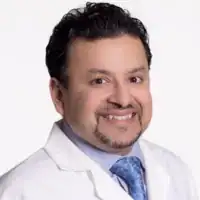 Indy Chabra, MD, PhDDr. Indy Chabra is a Board Certified Dermatologist and a Board Certified Mohs Micrographic Surgeon. He is the Founding Member of DMC Dermatology & Mohs based in Tucson, Arizona. With over 15 years of experience, he provides medical, surgical, and cosmetic dermatology care for adult and pediatric patients. Dr. Chabra earned a BS in Chemistry and Biological Sciences and an AB in Economics from Stanford University. He also received his MD and PhD in Microbiology and Genetics from Stony Brook University. He completed his Dermatology residency at the University of Pittsburgh Medical Center (UPMC), Pittsburgh. While at UPMC, Dr. Chabra received extensive training in complex Medical Dermatology, hair and nail conditions, Pediatric Dermatology, Cosmetic Dermatology, and Mohs Skin Cancer Surgery. Dr. Chabra is a Fellow of the American Society for Mohs Surgery, a Fellow of the American Academy of Dermatology, and a Fellow of the American Society for Dermatologic Surgery. Dr. Chabra also provides in-patient Dermatology consults at Tucson Medical Center.
Indy Chabra, MD, PhDDr. Indy Chabra is a Board Certified Dermatologist and a Board Certified Mohs Micrographic Surgeon. He is the Founding Member of DMC Dermatology & Mohs based in Tucson, Arizona. With over 15 years of experience, he provides medical, surgical, and cosmetic dermatology care for adult and pediatric patients. Dr. Chabra earned a BS in Chemistry and Biological Sciences and an AB in Economics from Stanford University. He also received his MD and PhD in Microbiology and Genetics from Stony Brook University. He completed his Dermatology residency at the University of Pittsburgh Medical Center (UPMC), Pittsburgh. While at UPMC, Dr. Chabra received extensive training in complex Medical Dermatology, hair and nail conditions, Pediatric Dermatology, Cosmetic Dermatology, and Mohs Skin Cancer Surgery. Dr. Chabra is a Fellow of the American Society for Mohs Surgery, a Fellow of the American Academy of Dermatology, and a Fellow of the American Society for Dermatologic Surgery. Dr. Chabra also provides in-patient Dermatology consults at Tucson Medical Center.
Board Certified Dermatologist Not necessarily. Although a broken down skin is more prone to getting infected by bacteria, herpes and, less commonly, yeast, these are very severe cases and most people shouldn't get that with waxing.
Not necessarily. Although a broken down skin is more prone to getting infected by bacteria, herpes and, less commonly, yeast, these are very severe cases and most people shouldn't get that with waxing.
References
- ↑ https://www.treatwell.co.uk/treatment-files/8-ways-to-minimise-waxing-pain-we-wish-wed-known-about-before/
- ↑ https://www.teenvogue.com/story/how-to-make-hair-removal-less-painful
- ↑ https://www.teenvogue.com/story/how-to-make-hair-removal-less-painful
- ↑ https://pubmed.ncbi.nlm.nih.gov/12705527/
- ↑ https://www.harpersbazaar.com/uk/beauty/skincare/news/a35246/how-to-make-waxing-painless/
- ↑ https://www.treatwell.co.uk/treatment-files/how-to-prepare-for-your-first-waxing-appointment-back-at-the-salon/
- ↑ https://www.harpersbazaar.com/uk/beauty/skincare/news/a35246/how-to-make-waxing-painless/
- ↑ https://www.teenvogue.com/story/how-to-make-hair-removal-less-painful
- ↑ https://www.treatwell.co.uk/treatment-files/8-ways-to-minimise-waxing-pain-we-wish-wed-known-about-before/
- ↑ https://www.treatwell.co.uk/treatment-files/8-ways-to-minimise-waxing-pain-we-wish-wed-known-about-before/
- ↑ Indy Chabra, MD, PhD. Board Certified Dermatologist. Expert Interview. 10 March 2022.
- ↑ https://www.self.com/story/bikini-wax-tips
- ↑ https://www.harpersbazaar.com/uk/beauty/skincare/news/a35246/how-to-make-waxing-painless/
- ↑ https://www.teenvogue.com/story/how-to-make-hair-removal-less-painful
- ↑ https://www.self.com/story/how-to-take-the-pain-out-of-wa
- ↑ https://www.treatwell.co.uk/treatment-files/waxing-mistakes/
